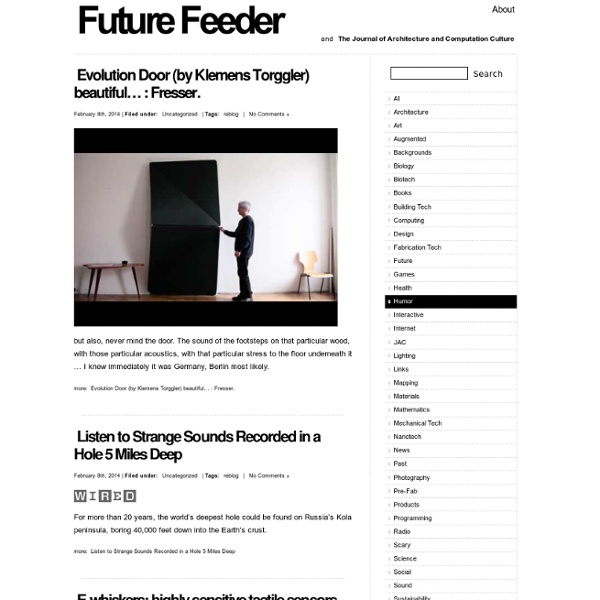Future Feeder and Journal of Architecture & Computation Culture

DesignVerb!
Core77 / industrial design magazine + resource / home
we make money not art
CONTEMPORIST
design blog
Strangeharvest :: Architecture / Design / Culture
Daily Icon
things magazine: an online journal about objects and meanings
Blog Esprit-Design : Tendance Design / Deco
Social Design Notes: Design + Activism
From an interview with Molly Crabapple: “Art can change the world, but seldom in the way it intends, and seldom the art that people think would have that effect. I keep thinking of the Guy Fawkes mask Dave Gibbons drew. In discussions of what art is radical, mainstream comics are seldom brought up. 28 January 2014 | LINK How The Sex Pistols saved Christmas: For the families of the striking fire fighters, Christmas 1977 was going to be a difficult one. 26 December 2013 | LINK In 2008, Erica Chenoweth published a study comparing 323 violent and non-violent civil resistance campaigns between 1900 and 2006. Non-violent campaigns worldwide were twice as likely to succeed as violent insurgencies. Erica presented her research at TEDxBoulder last month: She's also posted an FAQ and a transcript of her talk along with links and footnotes. The arts community is missing a great chance to push ballet initiatives today in NYC. Heard about that big corporate settlement for defrauding the public?
Related:
Related:



